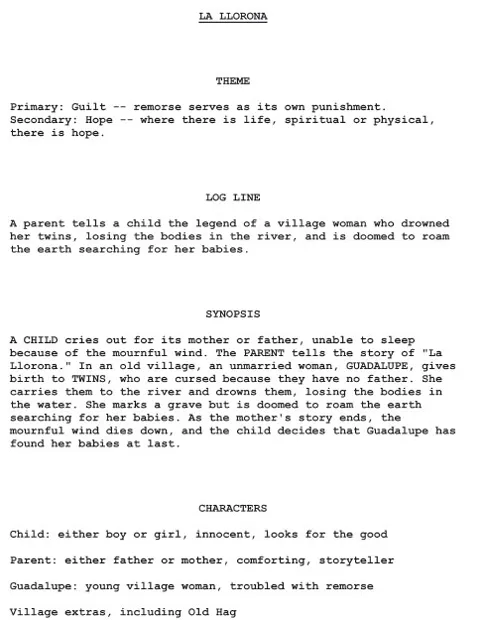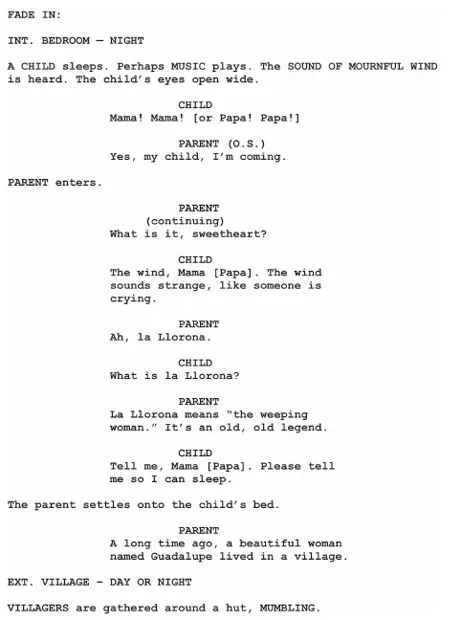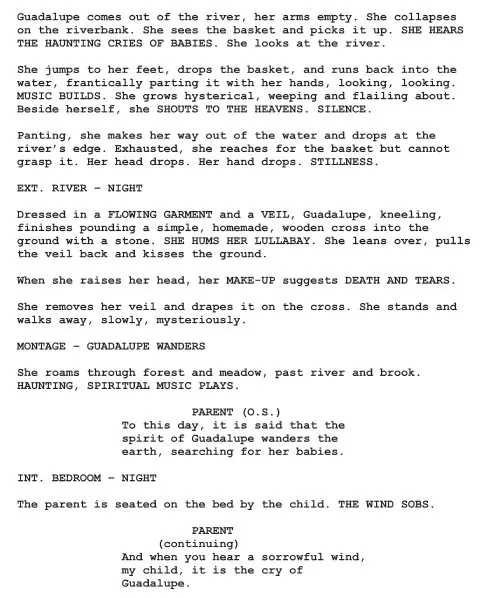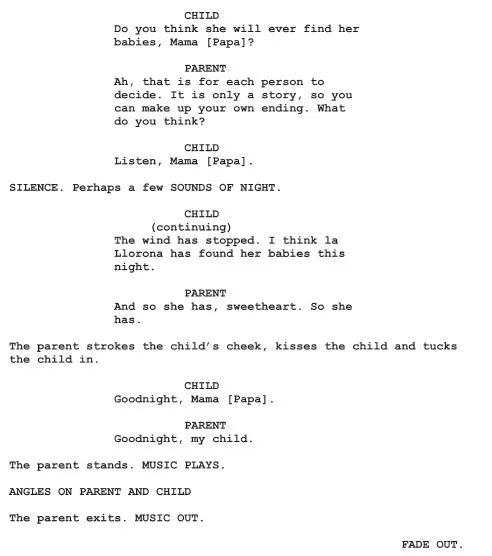![]()
1
Introduction and Sample Script
A review of the literature of drama reveals at least eleven broad concepts for a dramatist to consider in any medium, written or performed, on stage or on screen: plot, character, theme, dialogue, sound, spectacle, unity, metaphor, universality, catharsis, and style. To be sure, many texts discuss a variety of additional terms in analyzing drama. However, I posit that those terms have their respective places within these eleven, broader concepts. That is, those additional concepts are derived from the eleven fundamental elements outlined here. The remaining chapters in this book explore each of these concepts in turn. In those chapters, I incorporate many of those additional terms, demonstrating how they are part and parcel of the eleven foundational concepts identified for this introductory primer.
Drama Defined
For this text, the word drama is used with its original Greek meaning: conflict. It is not used with the contemporary meaning of “serious” or “heavy,” as opposed to “comic” or “light,” though the Academy of Television Arts and Sciences grants Emmy awards in the categories of “Drama” (usually hour-long episodic television series) and “Comedy” (usually half-hour situation comedies). For this manuscript, all drama is conflict, whether tragic, comic, or somewhere between the two (see Figure 1.1). In its simplest form, dramatic conflict arises when a person attempts to accomplish something against the obstacles standing in his or her way. The drama ends when the character overcomes the final obstacle, thereby resolving the conflict.
Figure 1.1 Drama is conflict, whether “pure” tragedy or comedy, as depicted in these masks, or something between the two
Aristotle and Others
The first recorded exposition of the components of drama is Aristotle’s Poetics (c. 335 BCE). Though Aristotle refers specifically to tragedy in his treatise, the elements apply to all dramatic forms, including comedy (see Chapter 10). Aristotle asserts that dramatic art consists of six elements: plot, character, theme, dialogue, music, and spectacle. Other writers present other typologies. For example, Bailey (1957) lists three components: plot, character, and conflict. Hilliard (2012) discusses seven items: unity, plot, character, dialogue, exposition, preparation, and setting. Winston (1973) offers 16 elements: theme, premise, conflict, crisis-resolution, unity, logic, character, change, foreshadowing, progression, point of attack, point of focus, style, suspense, orchestration, and texture. These are just three examples of the many scholars who divide the elements of drama into useful categories for analysis. All such lists, however, really just condense or expand the elements from Aristotle’s typology (Lee 2001). Aristotle still stands today (see Figure 1.2).
Figure 1.2 Aristotle (384–322 BC), the founder of dramatic theory
In addition to Aristotle’s six elements, five other dramatic concepts are found in the literature: unity, metaphor, universality, catharsis, and style. Together, these eleven elements constitute a minimal core of dramatic theory. It is important to note that these components are fully interrelated in drama. While it is useful to separate them for analysis, it is only when they come together in an organic whole that a play is born for the stage or screen. Dialogue cannot happen without the characters who speak it. Style is inseparable from the spectacle that reveals it. Universality does not exist apart from a theme that entices viewers. With this synergy of all elements in mind, the chapters that follow explore these foundational elements of drama in turn.
Sample Script: La Llorona (The Weeping Woman)
I find it useful in any discussion of drama and story structure to have at least one example of a play or script that everyone reads. While I refer to many plays, movies, and television programs as examples throughout this text, I include here one, short, narrative script as a common reference (see Figure 1.3). I choose this short sample, rather than a feature screenplay, to keep you from getting bogged down. I encourage you to read the following script before proceeding to the remaining chapters. The references to this script throughout the book will then make sense.
Figure 1.3 Script of La Llorona
The story of La Llorona (yo-RO-nah), or The Weeping Woman, is a centuries-old story in the Spanish-speaking diaspora. The story is in the public domain. This particular script is my creation, inspired by a video project by one of my students, Ignacio Oliveros, to whom I express my thanks. The script is deliberately short (four pages plus a title page and summary page) for quick reading and reference. The dialogue is deliberately sparse for critique. The story is told more in action than in words because film-video is a visual medium. The characters and settings are described minimally to allow maximum interpretations.
While I hold the copyright to this script, I give my permission for any reader of this book to use it for educational, nonprofit purposes. You may disseminate it for reading and/or production if you do not profit from it. If you produce it, and it turns out so well a distributor wants to buy it, contact me and we’ll negotiate a deal!
![]()
2
Plot
For Aristotle (c. 335 BCE), plot is the most important element of drama (perhaps that’s why this is the longest chapter with the most to say). This term is also translated from the Greek mythos as “action,” “fable,” “form,” “myth,” “story,” and “structure.” The plot is the arrangement, or sequence, of the action in the story. It is “what happens in the play.”
Three-Act Structure
A dramatic plot consists of a beginning, middle, and end. In the broadest sense, this is the three-act structure that makes up much dramatic writing: Act 1 = beginning, Act 2 = middle, Act 3 = end (e.g., Hunter 2004; O’Bannon and Lohr 2012). Interestingly, these three acts are NOT equal in length; each is NOT one-third of the script. In reality, Act 1 is about the first ONE-FOURTH of a script; Act 2 is about the MIDDLE HALF, or TWO-FOURTHS of a script, which can be divided into parts 2A and 2B with the midpoint at the center; Act 3 is the final ONE-FOURTH. Only screenwriters would divide a script into FOUR parts and then call it a THREE-ACT structure. I suppose that’s why they’re not mathematicians.
Delving deeper, a feature screenplay today is roughly ...














